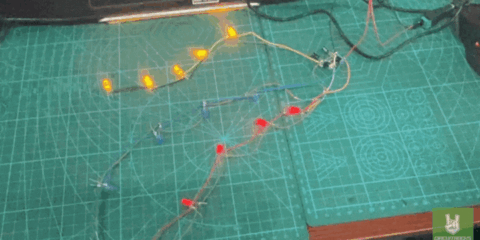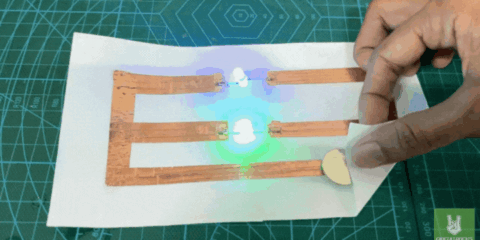Circuitrocks has a bunch of wireless technologies available for Arduino wireless communications. Here is a short guide on how to choose the correct one for your projects.
Communicating with Arduino
Wired communication is essential with Arduino boards. You can’t even upload your program without using a wired USB to UART serial connection. Moreover, you interface with sensors using different communication protocols through the pins. These wires serve as pathways for power and data. They are the minimum requirement for an Arduino project to operate correctly.
However, things get more complicated if you decide to use wired communication in IoT. IoT, also known as the Internet of Things, is a system of electronic devices connected so that they can use each other’s data without requiring human interaction. An IoT network can span from a single house to a global scale connectivity. With this, wired communication is out of the question. IoT applications need wireless connectivity.
WiFi
WiFi is a wireless networking technology based on the IEEE 802.11 family of standards. Setting up Local Area Networks and internet access is the most common usage of WiFi. Commonly mistaken as Wireless Fidelity, WiFi is a standalone name.
Frequency: 2.4 and 5GHz
Range: 50m
Data Rate: 600 Mbps maximum, but 150-200Mbps is more typical, depending on channel frequency used and number of antennas (latest 802.11-ac standard should offer 500Mbps to 1Gbps)
Pros
- Low-cost and relatively fast data rate
- Accessible
Cons
- High power consumption
The best board to learn WiFi is an ESP8266 board. You can get them here.

Bluetooth
Bluetooth is a wireless technology for Personal Area Networks. It is commonly used on wearable devices and mobile phones. Moreover, it is backward compatible.
BLE, also known as Bluetooth Low Energy, is a newer version that is designed for low power applications that use fewer data.
Frequency: 2.4GHz
Range: 50-150m
Data Rate: 1 Mbps
Pros
- Low-cost and relatively fast data rate
- Low power consumption
- Requires less bandwidth than WiFi
Cons
- Only two devices can be connected at the same time
- Not secure
- Sudden disconnection is common
The most common Bluetooth module for Arduino is the HC05. Get it here.

Cellular
Cellular communication is a wireless communication technology that enables mobile phones. Using cellular communication, you can transmit and receive from very long distances as long as there is tower coverage. Cellular networks support several wireless protocols specifically, GSM/GPRS/EDGE (2G), UMTS/HSPA (3G), LTE (4G).
Frequency: 900/1800/1900/2100MHz
Range: 35km max for GSM; 200km max for HSPA
Data Rate: 35-170kps (GPRS), 120-384kbps (EDGE), 384Kbps-2Mbps (UMTS), 600kbps-10Mbps (HSPA), 3-10Mbps (LTE)
Pros
- It supports different types of data transfer, i.e. TV streaming, mobile TV and phone calls.
- Compatible with Integrated Services Digital Network (ISDN) and other telephone company services.
Cons
- Very high power consumption
- High cost
- Requires a high bandwidth
The easiest way to learn cellular communications is through the SIM800L module. Get it here.

LORA
LORA, short for Long-Range, is based on the Low Power Wide Area Network (LPWAN) wireless technology. The drawback of its extensive coverage is that it has a slow data rate. It can support large networks of up to millions of devices. It boasts a more secure connection as well compared to the other wireless technologies.
Frequency: Various
Range: 2-5km (urban environment), 15km (suburban environment)
Data Rate: 0.3-50 kbps.
Pros
- Long-distance coverage.
- Low power consumption.
- Secure connection.
Cons
- Slow baud rate.
If you want to learn more about LoRa communication, check this article from Bernd, the developer of the Circuitrocks ALORA board. It’s the first part of a series of in-depth tutorials on the board. Be sure to check it out!

Zigbee
Zigbee is based on the IEEE802.15.4 protocol. It is commonly used for industrial applications rather than anything else. It is low power, secure, and scalable. If your project requires low-power low-bandwidth and wireless connection, Zigbee is a suitable communication module for your device.
Frequency: 2.4GHz
Range: 10-100m
Data Rate: 1 Mbps
Pros
- Flexible network structure.
- Low power consumption.
- Easy-to-use.
- Low cost.
Cons
- Not that secure connection.
- Limited to indoor applications.
- Low transmission rate.
Get your first Zigbee board here. Xbee 3 module is the third version of the Xbee series. Not only does it support Zigbee communication, but it also BLE-enabled.

NFC
NFC, also known as Near Field Communication, is based on the ISO/IEC 18000-3 standard. It is popular with short-range applications that need a high level of security. For instance, contactless payments.
Frequency: 13.56MHz
Range: 10cm
Data Rate: 100–420kbps
Pros
- Secured connection.
- Flexible and easy to integrate.
- Low power consumption.
Cons
- Low transmission rate.
- Limited range.
The most popular board for NFC communications is RC 522. It is so popular that almost every Arduino Starter Kit has it. Read more about the module here.

GPS
GPS, also known as Global Positioning System, is a wireless technology that uses space satellites to pinpoint a location in the ground. It is very popular with automated drones and cars.
Frequency: L1 (1575.42 Mhz) and L2 (1227.60 MHz)
Range: Global
Data Rate: 50bps
Pros
- Widest coverage
- Free access
Cons
- Accuracy
- Limited applications
- Privacy issues
- High power consumption
The GPS NEO6MV2 Flight Control Module is the best choice if you’re looking for a GPS module to get you started. Get it here. Also, check this article to learn more about GPS.

RF
RF, also known as radio frequency, is a wireless technology that uses frequencies from the radio spectrum to transmit or receive data. Several RF modules use different operational frequencies, but the most popular one is the 433MHz.
Frequency: Depends on the module
Range: 100-250m with antenna
Data Rate: Up to 2Mbps
Pros
- Low power consumption
- Versatile
- Low cost
Cons
- The range is small without an antenna
- Some modules can’t transmit and receive data at the same time
The NRF24L01 Module is the most advisable first step in learning radio communications. It is insanely cheap, but it can get the work done. You can get it here. Also, here’s a short tutorial on how to use it.

Summary
| Frequency | Range | Data Rate | |
| WiFi | 2.4GHz and 5GHz | 50m | 600 Mbps max |
| Bluetooth | 2.4GHz (ISM) | 50-150m | 1Mbps |
| Cellular | 900/1800/1900/2100MHz | 35km max for GSM; 200km max for HSPA | (typical download): 35-170kps (GPRS), 120-384kbps (EDGE), 384Kbps-2Mbps (UMTS), 600kbps-10Mbps (HSPA), 3-10Mbps (LTE) |
| LORA | ISM band | 2-5km (urban environment), 15km (suburban environment) | 0.3-50 kbps. |
| Zigbee | 2.4GHz | 10-100m | 250kbps |
| NFC | 13.56MHz (ISM) | 10cm | 100–420kbps |
| GPS | L1 (1575.42 Mhz) and L2 (1227.60 MHz) | Global | 50bps |
| RF | 433MHz | 47-102ft ; 384 – 826ft | 100 meters |
Here’s a recap of all the technical details from the wireless technologies above. I hope you learned something new. Till next time!





